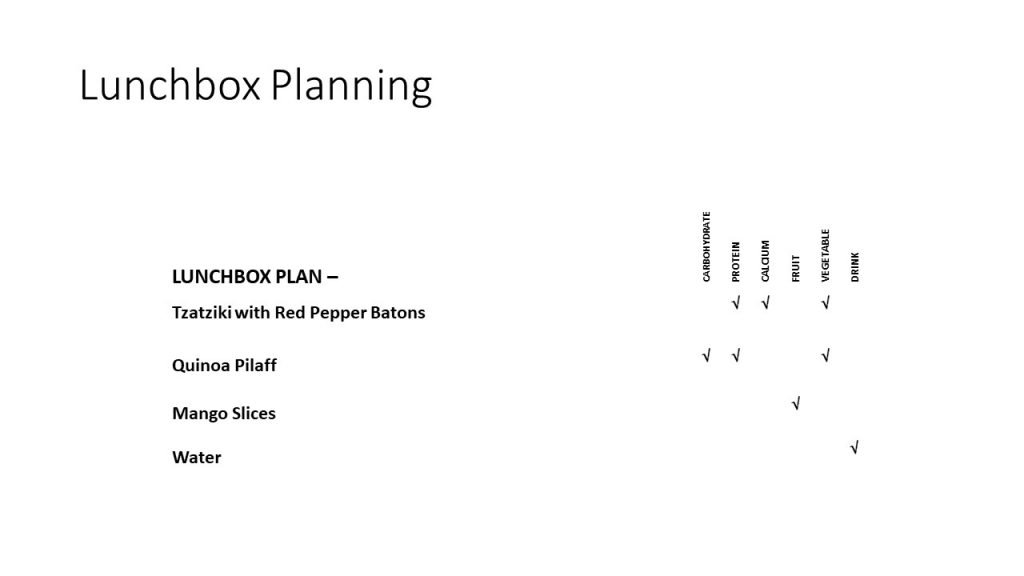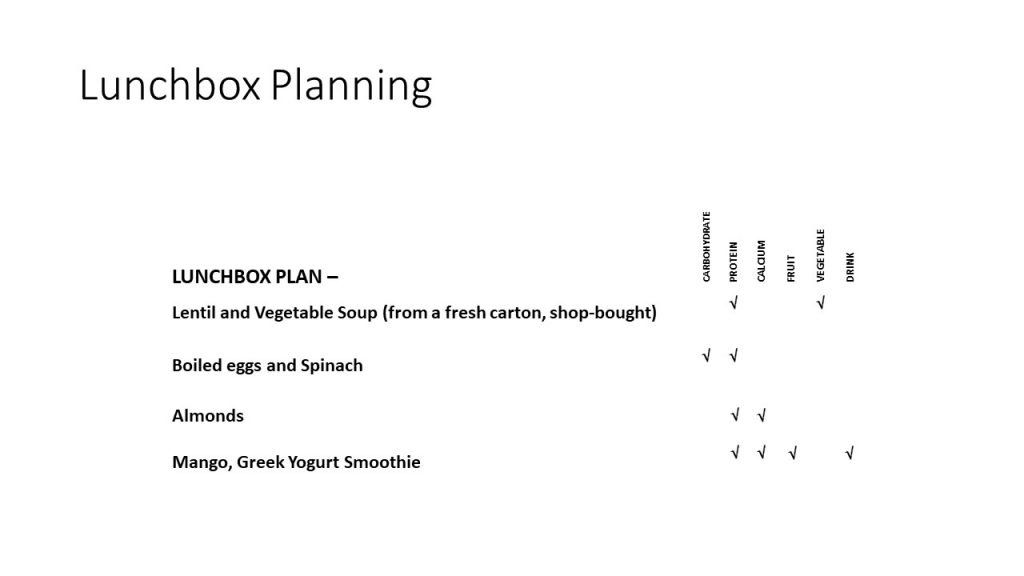
Love Yourself – Simple Lunches
Valentine’s Day, which is celebrated on 14th February, has long been associated with romantic love. Whilst that means it is a popular day for couples to spend together, shouldn’t it be a reminder that we can love ourselves too? Loving ourselves means caring for ourselves and making food and drink choices that reflect that love, care and respect for our body. In this blog I will outline how we can best make simple lunches that nourish and do not simply provide fuel.
The planning process I have developed for lunches called “Lunchbox Bingo” is the start of the self-love process. If you can spend the necessary time to have a think about the foods that will nourish but that also form a balanced lunch, you will feel more in control and healthier as a result. The six components of a balanced lunch are as follows:
CARBOHYDRATES
Let’s start with carbohydrates. We know that complex carbohydrates in the form of fibre-rich vegetables and fruits, pseudo grains such as quinoa and buckwheat and grains such as brown rice, oats and rye are the most nourishing forms of slow release energy we can choose.
PROTEIN
Different people respond better or worse to different forms of protein. Some get on well with pulses such as lentils, chickpeas and beans whilst others do not. Some thrive on dairy produce such as yogurt, kefir, unpasteurised cheeses whilst others do not. Choosing the best protein sources for you and your body may take some trial and error but a variety of protein sources and always at least one source at mealtimes is recommended.
CALCIUM
This is such a crucially important nutrient in our diet for bone health, teeth, muscle contractions, including heart contractions. Whilst many thought you could only get calcium from dairy products for a very long time it is now more widely known that calcium comes from green leafy vegetables such as broccoli, cabbage, kale, okra, soy products such as tempeh and tofu, nuts, seeds as well as bones in fish (think of tinned sardines and pilchards).
VEGETABLES
Eating seasonal vegetables is a great way to care for the seasonal needs of your body. During the colder months of January and February in the UK for example cabbages, cauliflower, Brussels sprouts, leeks and root vegetables are all available. These lend themselves to pickles, slaws and soups galore.
FRUIT
Fruit is natures sugar. A portion of fruit on its own, in a salad, in a smoothie or with yogurt or nuts can really nourish the body. Both fruit and vegetables provide necessary fibre to the body. That’s ideal for giving you longer lasting energy but it also greatly contributes to the optimal running of the digestive system.
DRINK
About 70% of the human body is made up of water. Your body uses water in all its cells, organs and tissues to help regulate its temperature and maintain bodily functions. You lose water through breathing, sweating and digestion and so we must stay hydrated. Looking after this aspect of your health is so important. Make sure your urine is no darker than straw.
Loving Meal Plans
With all this in mind, I have put together some meal plans for lunches that are nourishing and caring, delicious and nutritious and not too onerous to create either.



